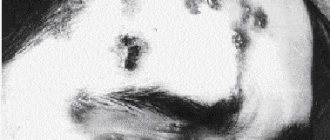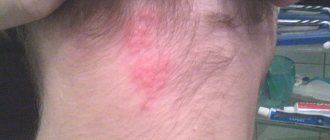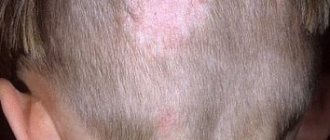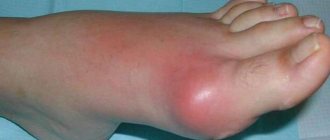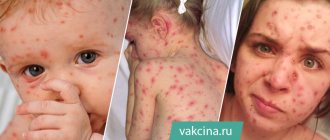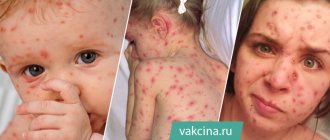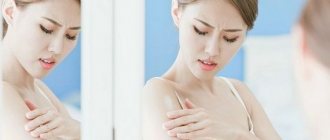White (asbestos) pityriasis is a dermatological disease characterized by the formation of white or yellowish scales on the skin. They can be localized on the face, neck, chest and upper extremities.
According to studies, the disease often develops in 5% of children 6-12 years old and preschool age. The disease is not dangerous, but it causes a cosmetic defect, which can bother a child, especially a teenage girl.
This type of lichen forms on the sites of previously suffered eczema and psoriasis.
Varieties and atypical forms
Lichen alba, like vesicular lichen, is a type of simple lichen. Visually, it is similar to multi-colored lichen: the only difference is that the spots with multi-colored rashes do not appear on the face.
Atopic dermatitis is often a secondary disease in lichen alba. There is a relationship between skin diseases and skin injuries.
Lichen alba refers to a slowly progressive disease in which the lesions gradually spread and increase in size.
Based on the nature of the spread of the rash, the following types of white lichen are distinguished:
- segmented, in which formations are concentrated in the area of one skin segment;
- focal, characterized by the merging of several spots into a lesion;
- universal, when the rash spreads throughout the body.
The symptoms are largely similar to other dermatological diseases, so it is often very difficult to make a diagnosis. Peeling of the skin and white spots are also characteristic of such pathologies as vitiligo, pityriasis versicolor, pityriasis versicolor and many other skin diseases. Therefore, to make an accurate diagnosis, it is necessary to know other manifestations characteristic of a particular disease. In any case, the main difference between white lichen and its other forms is not contagiousness.
Sometimes the pathology can occur in an atypical form. This includes atypical localization of spots or irritating lichen associated with friction, injury, sweating and manifested by increased itching.
Cause
Any dermatitis can heal, leaving pale skin, as well as overuse of corticosteroid creams used to treat episodes of eczema. Hypopigmentation occurs due to decreased melanocyte activity with smaller and smaller melanosomes.[5][6]
The cause of white lichen is unknown. Dry skin and atopic dermatitis can coexist. The spots may become more visible after sun exposure when the normal surrounding skin becomes tanned.[1] The Role of Ultraviolet Radiation, Bathing or No Bathing, Low Serum Copper, and Malassezia Yeast
unclear.[1]
Causes
The etiology of the disease has not yet been studied: the pathology refers to dermatitis without a specific course. If we assume that the disease is most often characteristic of adolescence, we can conclude that it is associated with insufficient or excessive personal hygiene. A disturbed balance of the microflora of human skin due to hormonal imbalance can also lead to illness.
There are two fundamental judgments that describe not only the sources of the appearance of pityriasis alba, but also its belonging to any group of pathologies:
- Malassezia. According to this theory, lichen is caused by Malassezia bacteria, which, when entering the body, suppress access to ultraviolet rays to the skin. This yeast-like fungus is a representative of the normal microflora of the skin and can manifest itself in case of any failure in the human immune system. A chemical compound secreted by the fungus affects the movement of melanin. As a result, some areas of the skin become lighter.
- Staphylostreptoderma. According to another, less recognized version, pityriasis alba is classified as a mild form of staphylostreptoderma, an inflammatory skin disease caused by streptococci.
The main group of people most susceptible to this pathology and determining the roots of the development of the disease has also been identified:
- people suffering from frequent allergic rashes or who have suffered an allergic form of dermatitis;
- patients suffering from hay fever, eczema or bronchial asthma.
It is believed that boys from three to sixteen years of age are more susceptible to lichen alba. If the disease makes itself felt in the first years of life, then it can remain on the skin for a long time. In this case, we are talking about a chronic form of pathology. Adults are susceptible to it less often and mainly during periods of weakening of the immune system. There is also an opinion that the disease is more typical for the spring-summer period.
Diagnosis of white pityriasis
First of all, the dermatologist interviews the patient and collects data on medical history and illness. The doctor should find out about skin diseases from the patient's relatives in order to trace a possible hereditary predisposition to skin diseases.
For a medical history, the doctor must find out the duration of the disease or the time of its first manifestations. Whether the patient resorted to any therapeutic measures and whether there was a positive/negative result from them.
The patient should also be diagnosed for allergies or hypersensitivity to medications.
Next, the skin is examined in natural light.
To exclude certain diseases (syphilis, chickenpox) of the skin, the doctor may prescribe immunological tests.
Differential diagnosis
Lichen alba, first of all, must be distinguished from pityriasis versicolor, or lichen versicolor. This disease causes the formation of white spots on the body due to the growth of a fungus that affects the skin due to disruption of the functions of melanocytes. These cells produce melanin, which is responsible for the color of the skin.
Vitiligo
With multicolored lichen, the scales are pityriasis-like, but the peeling is expressed to a slight extent.
Pityriasis alba can be confused with vitiligo.
Vitiligo is a disorder of skin pigmentation due to insufficient production of melanin in certain areas of the skin. Factors that can provoke the development of the disease:
- the effect of medications;
- influence of chemicals;
- autoimmune disease;
- dermatitis;
- necrotic processes in the skin.
Vitiligo has clear boundaries. This fact serves as the basis for differentiating asbestos pityriasis from vitiligo.
Symptoms
The symptoms of the disease are as follows:
- The appearance of white spots of different localization - most often on the face in the cheeks, neck, shoulders, arms, hips.
- The color of the spots is very light - this is especially visible on dark skin.
- When pressing on the stain, it does not change either shape or color.
- The shape of the rash is usually oval with a diameter from a few millimeters to five centimeters.
- The spots do not cause any painful sensations, except that children may be bothered by mild itching. The boundaries of the spots are unclear and flaky.
- As the spots progress, they may merge together.
- The rashes are covered with small translucent scales.
Often, the precursors of pityriasis alba can be pale pink papules with raised edges that remain in appearance for several weeks. After this, the formations are covered with a thin film and take on the appearance of lichen simplex.
Epidemiology
It occurs primarily in children and teenagers of all races, especially people with dark skin. The worldwide prevalence among children is 5%, with boys and girls affected equally.[1] Adults can also suffer from this condition.[11]
Up to a third of schoolchildren in the United States may have the condition at some stage. Single-point prevalence studies in India showed variability ranging from 8.4%.[12] to 31%.[13] Other studies showed a prevalence rate in Brazil of 9.9%,[14]Egypt 13.49%,[15]Romania 5. 1%,[16] Turkey 12%, where higher rates were observed among those with poor socio-economic conditions,[17] and only 1% of schoolchildren in Hong Kong.[18] In 1963, one school clinic reported patterns of white pityriasis in two-fifths of their children.[2]
Photo of simple white lichen: what it looks like
The photo shows how certain parts of the human body are covered with white spots. These can be either individual foci or entire islands of rashes. With light skin tones, the formations have an inconspicuous appearance. The shape and size of the spots are also varied. The photos also show the flaky surface of the spots with uneven edges.
Diagnosis and differentiation
Pityriasis alba is often confused with tinea versicolor, in which fungal overgrowth on the skin causes white patchy lesions.
There are several ways to distinguish between the two disorders:
- The Wood Light study used a handheld ultraviolet (UV) lamp to highlight differences in skin color. It is usually performed in a dermatologist's office in a darkened room.
- Potassium hydroxide can be used to lightly scrape the skin. When examined under a microscope, any signs of fungus will visibly highlight, confirming fungal conditions such as tinea corporis (ringworm).
Pityriasis alba can also be confused with vitiligo, a disease caused by the destruction of melanocytes in the affected skin. Pityriasis alba can be distinguished from vitiligo by its borders.
Vitiligo has clear boundaries and a sharp contrast in dark and light colors. The changed parts of the skin may also be larger and appear on sun-protected areas of the body, as well as the armpits, eyes, groin, genitals and rectal area.
Diagnostics
Usually the rash goes away on its own and does not require special treatment. But in order to exclude another more serious pathology, it is necessary to undergo appropriate tests. And for this you need to go to a dermatologist.
Diagnostics in this case will be as follows:
- visual examination of the patient and conversation with him regarding the circumstances of the appearance of the rash;
- taking a biopsy sample from skin flakes;
- examination of rashes with a Wood's lamp.
The diagnosis will be of a differential nature, aimed at excluding other types of pathologies. It is also necessary to exclude the presence of concomitant diseases. No test can completely determine pityriasis alba. Therefore, the diagnosis in this case will not be a statement, but an exception.
Treatment of lichen simplex
You should consult a doctor for adequate treatment in the following cases:
- The spots occupy a large surface area of the skin and their number is increasing.
- The spots are localized in areas of the skin exposed to direct sunlight.
- Symptoms are added in the form of itching, deterioration in general well-being, and increased body temperature.
- The appearance of signs of secondary infection in the perimeter of the spots in the form of swelling, pain or weeping eczema.
Therapeutic measures and duration of treatment
Skin with pityriasis alba becomes dry and sensitive, so treatment begins with the correction of daily care.
Firstly, you need to wash your face with warm water, and personal hygiene products should only be gentle.
Secondly, it is necessary to regularly use preparations to moisturize the skin.
Thirdly, when exposed to sunlight, you need to use special protective equipment.
If the above measures do not help, and stains continue to appear, you need to move on to more serious measures.
Ointments
Ointments based on corticosteroid hormones have an effective and safe effect. Calcipotriol and pimecrolimus creams are also common. Ointments will not only relieve mild itching, but will also help with the appearance of atopic dermatitis, which is a common companion to lichen simplex.
The main thing when choosing an ointment should be to relieve itching and flaking. One percent hydrocortisone ointment works well. Additionally, you can use moisturizing ointments. To remove cosmetic defects and mask stains, you can use regular baby fat cream or any other lanolin-based ointment. If weeping appears instead of peeling, zinc ointment will come to the rescue.
Sedatives and vitamin complexes
Often the appearance of skin rashes is associated with weakened immunity and stressful situations. Therefore, the treatment complex for white lichen should contain drugs that help combat stress and vitamins that strengthen the immune system. Phototherapy, in which the patient is exposed to sunlight, will help cope with the disease.
Other treatments in extreme cases
If basic therapy does not help and the disease continues to progress, then even skin transplantation is possible. And in cases of diagnosing contact dermatitis that appears against the background of pityriasis alba and its treatment, antifungal drugs are prescribed.
Treatment with folk remedies at home
As an adjuvant therapy in the treatment of lichen alba, you can resort to folk remedies. But it should be remembered that treatment should be without fanaticism: it should bring relief, not harm. And if a secondary infection occurs, it can cause harm, so it is better not to neglect the consultation of a specialist.
At home, the following will help alleviate the condition:
- Aloe. Problem areas should be rubbed with the juice obtained by cutting a leaf of the plant.
- Herbal infusions. A mixture of celandine, tansy and wormwood performs well. It can not only wipe stains, but also make lotions that will have an anti-inflammatory and soothing effect. To obtain a decoction, you need to mix a teaspoon of each herb and pour a glass of boiling water. After ten hours, the strained mixture is ready.
- Birch tar. Recommended by many specialists in the fight against dermatological diseases. Based on it, tar soap and Vishnevsky ointment are made, which are successfully used in the treatment of dermal diseases. At home, you can use tar for compresses or apply it with a brush to the location of the stains.
- Raisin. By rubbing it on and around inflamed areas, you can kill fungi and bacteria.
Recommendations
Since pityriasis alba is a disease that occurs without any peculiarities or harm to the body, it is better to give the body the opportunity to overcome the disease itself. Any intervention can only do harm.
It's not just the sun's rays that can cause irritation to white areas of the skin. It is also recommended to avoid frosty winds, chlorinated or sea water. To avoid further drying of the skin, it is recommended to replace regular soaps and shower gels with glycerin products. Contrast showers are also contraindicated: the water temperature should be equal to body temperature.
During the period of rashes, you need to make friends with an antiseptic. The skin in the area of the spots becomes very sensitive and thin. The slightest injury can lead to infection, so it is better to treat it in a timely manner.
Any changes in the body are its reaction to certain irritants: poor nutrition, stress and overwork, weakening of the immune system. Therefore, first of all, it is recommended to reconsider your lifestyle, eliminating everything negative from it.
If there is an increased risk of developing atopic dermatitis, it is necessary to exclude all allergens, which can be both food and household chemicals.
Recommendations
- ^ a b c d f g gram hour
“Pityriasis alba |
DermNet NZ." dermnetnz.org
. Retrieved March 12, 2022. - ^ a b c d e
Nordlund, James J.;
Boissy, Raymond E.; Rumor, Vincent J.; King, Richard A.; Oetting, William S.; Orton, Jean-Paul (2008). The pigment system: physiology and pathophysiology
. John Wiley and Sons. ISBN 978-1-4051-5733-9. - ^ a b
Pinto FJ, Bolognia JL (1991).
"Hypopigmentation disorders in children." Pediatric Clinics of North America
.
38
(4):991–1017. Doi:10.1016/S0031-3955(16)38164-0. PMID 1870914. - Pitiriaz Alba
at eMedicine - Vargas-Ocampo F (1993). "Lichen alba: a histological study." Int.
J. Dermatol .
32
(12):870–873. Doi:10.1111/j.1365-4362.1993.tb01401.x. PMID 8125687. - Friedberg et al (2003). Fitzpatrick's Dermatology in General Medicine
. (6th ed.). McGraw-Hill. ISBN 0-07-138076-0. - Lin RL, Janniger SK (2005). "Pityriasis alba." Kutis;
Skin Medicine for the Practitioner .
76
(1):21–4. PMID 16144284. - Harper J. (1988). "Topical corticosteroids for skin diseases in infants and children." Drugs
. 36 Supplement 5: 34–7. Doi:10.2165/00003495-198800365-00007. PMID 2978289. - Rigopoulos D., Gregoriou S., Charissi C., Contochristopoulos G., Kalogeromitros D., Georgala S. (2006). "Tacrolimus ointment 0.1% for pityriasis alba: an open-label, randomized, placebo-controlled trial." Br.
J. Dermatol .
155
(1):152–155. Doi:10.1111/j.1365-2133.2006.07181.x. PMID 16792767. - Di Lernia V, Ricci C (2005). "Progressive and extensive hypomelanosis and extensive white lichen: the same disease, different names?". Journal of the European Academy of Dermatology and Venereology: JEADV
.
19
(3): 370–372. Doi:10.1111/j.1468-3083.2004.01170.x. PMID 15857470. - Blessmann Weber M, Sponchiado de Avila LG, Albaneze R, Magalhães de Oliveira OL, Sudhaus BD, Cestari TF (2002). "Pityriasis alba: a study of pathogenic factors." Journal of the European Academy of Dermatology and Venereology: JEADV
.
16
(5):463–468. Doi:10.1046/j.1468-3083.2002.00494.x. PMID 12428838. - Dogra S., Kumar B. (2003). "Epidemiology of skin diseases in schoolchildren: a study from northern India." Pediatric dermatology
.
20
(6): 470–473. Doi:10.1111/j.1525-1470.2003.20602.x. PMID 14651562. - Fay O, N'Diaye HT, Keita S, Traore AK, Hay RJ, Mahe A (2005). "High prevalence of non-leprotic hypochromic macules among children in rural Mali, West Africa." Leprosy Review
.
76
(2): 144–6. PMID 16038247. - Becelli L.M., Haddad N., Pimenta V.P., Pagnano P.M., Melchior E., Fregnan R.C., Zanin L.C., Arenas A (1981). "Epidemiological survey of skin diseases in schoolchildren living in the Purus Valley (Acre State, Amazon, Brazil)." Dermatologica
.
163
(1):78–93. Doi:10.1159/000250144. PMID 7274519. - Abdel-Hafez K., Abdel-Aty M.A., Hofni E.R. (2003). "Prevalence of skin diseases in rural areas of Assiut Governorate, Upper Egypt." Int.
J. Dermatol .
42
(11):887–892. Doi:10.1046/j.1365-4362.2003.01936.x. PMID 14636205. - Popescu, R., Popescu, S. M., Williams, H. C., & Forsey, D. (1999). "Prevalence of skin diseases in Romanian schoolchildren." Br.
J. Dermatol .
140
(5):891–896. Doi:10.1046/j.1365-2133.1999.02821.x. PMID 10354028. - Inanir I, Sahin M.T., Gündüz K., Dinç J., Türel A., Ozturkkan S. (2002). "Prevalence of skin diseases in primary school children in Turkey: differences based on socioeconomic factors." Pediatric dermatology
.
19
(4): 307–311. Doi:10.1046/j.1525-1470.2002.00087.x. PMID 12220273. - Fung W.K., Lo K.K. (2000). "Prevalence of skin diseases among schoolchildren and adolescents at the Hong Kong Student Services Centre." Pediatric dermatology
.
17
(6): 440–446. Doi:10.1046/j.1525-1470.2000.01841.x. PMID 11123774. - O'Farrell, Norman M. (1 April 1956). "Pitiriaz Alba". AMA Archives of Dermatology
.
73
(4):376–377. Doi:10.1001/archderm.1956.01550040070010. ISSN 0096-5359.
Prevention
Following a number of rules will help prevent the disease:
- Always treat cuts and injuries with an antiseptic, even minor ones. Microbes and viruses look for every opportunity to enter the body, especially if it is weakened.
- Follow the rules of personal hygiene - do not use other people's combs, washcloths and other things.
- Monitor the state of your immune system and prevent it from becoming depleted. Best friends in this case: proper nutrition and exercise.
- Avoid stressful situations and excessive fatigue.
- Include foods that have an antiviral effect in your diet - lemon, onion, garlic. This also includes various herbal infusions, which also have an antimicrobial effect. For example, pour a glass of boiling water over a teaspoon of oregano, lemon balm, chamomile or thyme, let the herb brew for twenty minutes and take half a glass twice a day. This therapy should be carried out no more than twice a week.
Complications and consequences
The disease itself does not pose any danger, except that its course may last for several years. If there are few spots, they do not have a bright, pronounced color and do not cause inconvenience to a person, no measures can be taken to treat them. The only thing to remember: if the immune system is weakened, allergies develop, or excessive exposure to sunlight, a relapse of the disease may occur.
Therefore, if you do not want to ruin your vacation or darken your mood with disrupted plans, then it is better to contact a specialist. Treatment will not take much time, but the spots can make themselves known as pronounced white lesions at any time.
As for complications, if personal hygiene recommendations are not followed, signs of an inflammatory disease may be added to lichen alba, the treatment of which will be more serious.
During pregnancy
Pregnancy is associated with changes in hormonal levels and a weakened immune system, so during this period a woman may be faced with various kinds of previously undetected ailments. Lichen simplex can also be classified in this group. White spots may be the body's reaction to allergens. Perhaps the bacteria were already in the body and simply became active at a certain moment.
Lichen alba does not pose a threat to either the woman or the fetus. The only possible discomfort is itching. And if a woman experiences discomfort, this will affect her emotional state, which, in turn, will affect the child’s condition. Therefore, if inconvenience occurs, you should still get rid of lichen.
There are no contraindications for the treatment of lichen during pregnancy. Perhaps you should hold off on taking herbal teas internally: some herbs have a negative effect. But swimming in warm water will even be useful.
Care
No treatment is required and the spots will settle over time.[7] Redness, flaking and itching, if present, can be relieved with simple emollients, and sometimes hydrocortisone is also a weak steroid.[8]
Because pityriasis alba patches do not usually darken in the sun, effective sun protection helps minimize discolouration from surrounding normal skin. Cosmetic camouflage may be required.
Tacrolimus has been reported as a speeding solution.[9]
In particularly severe cases, PUVA therapy may be considered.[10]
